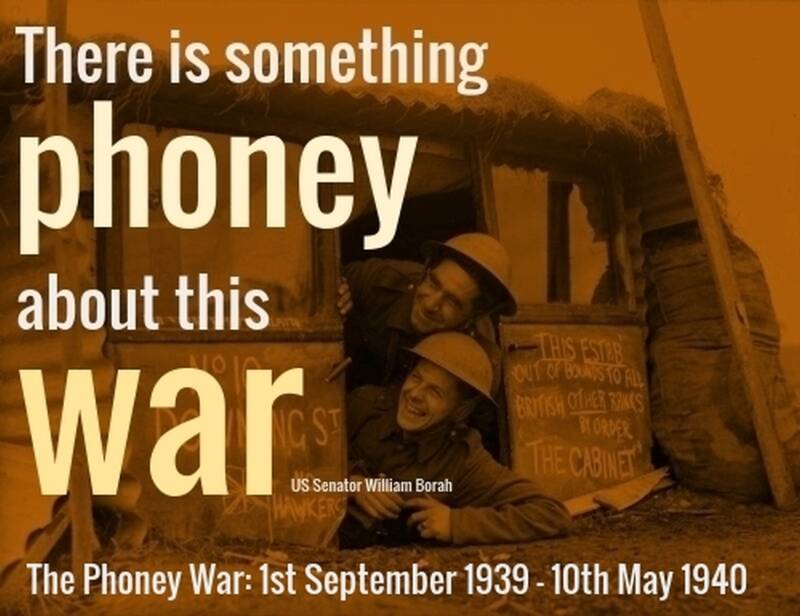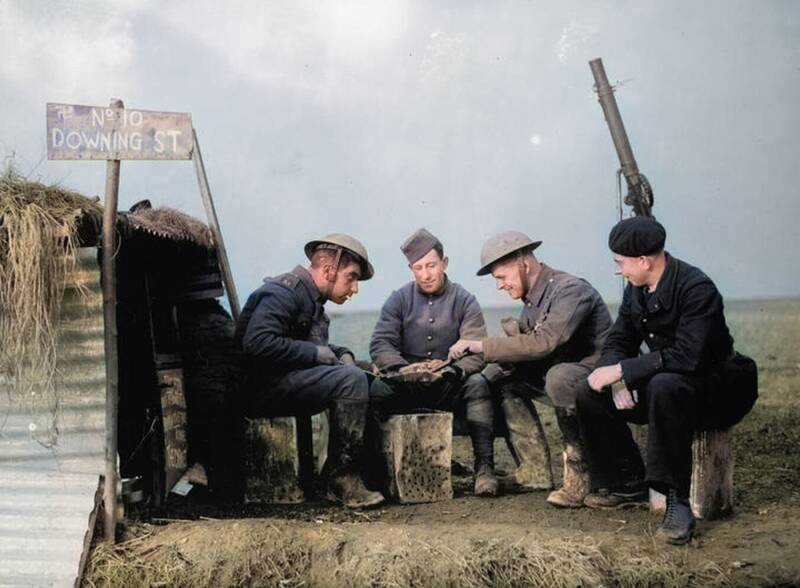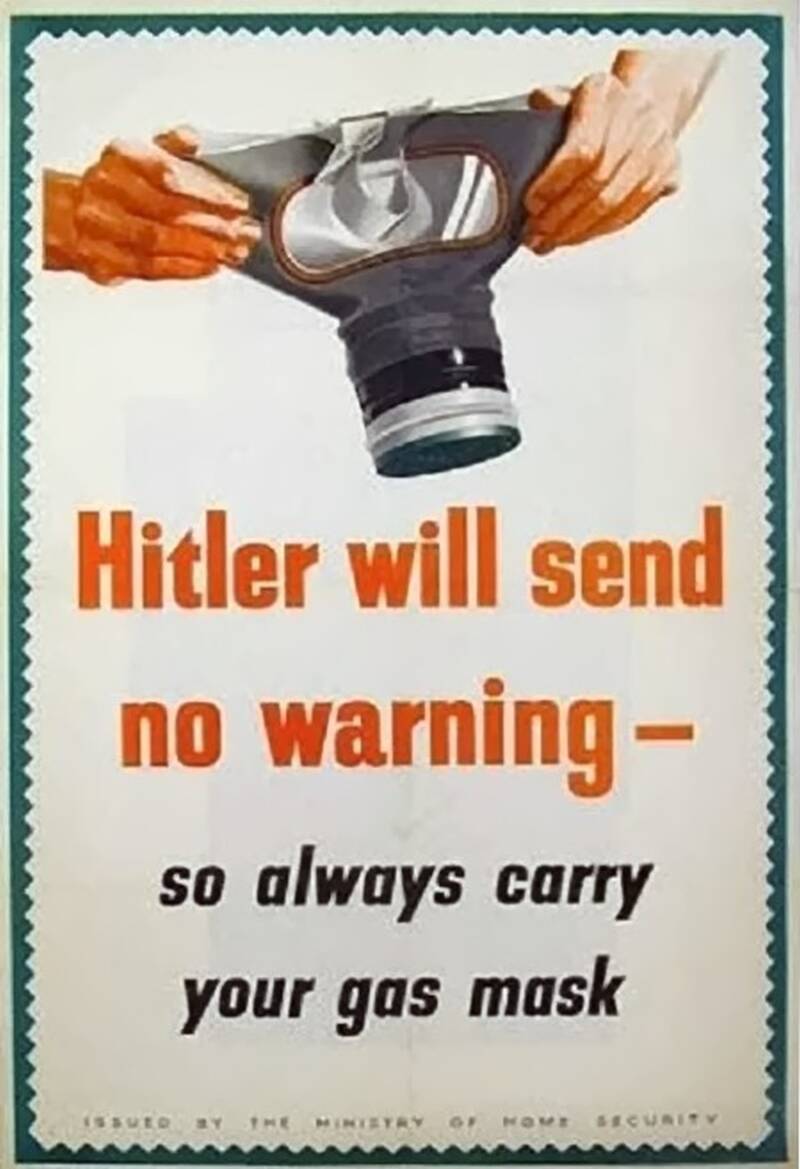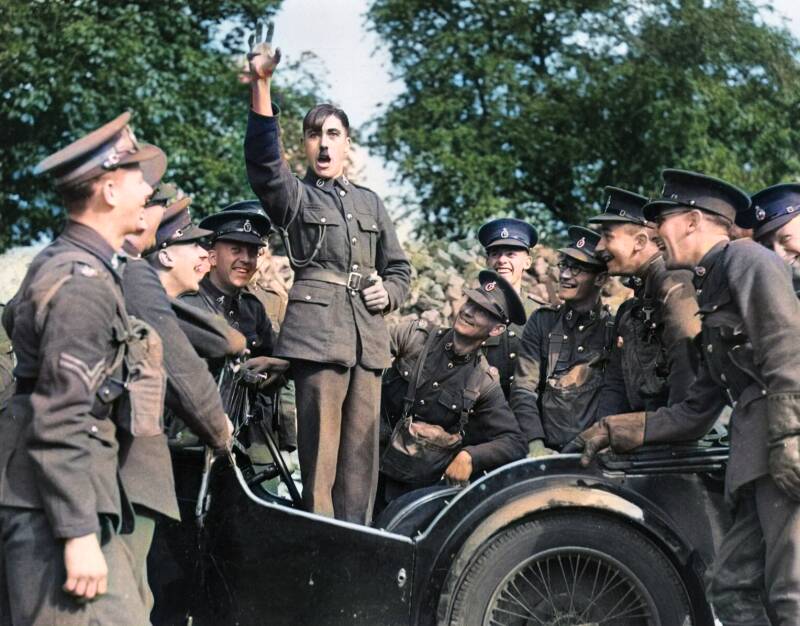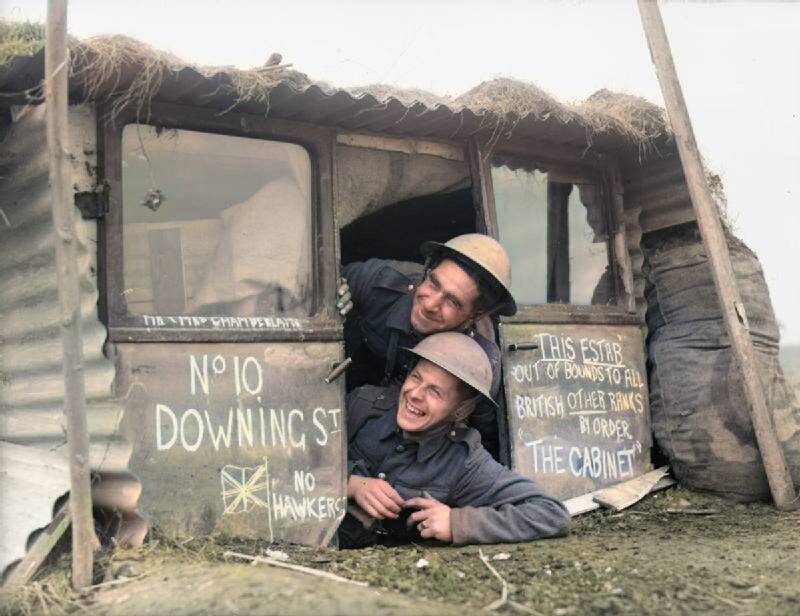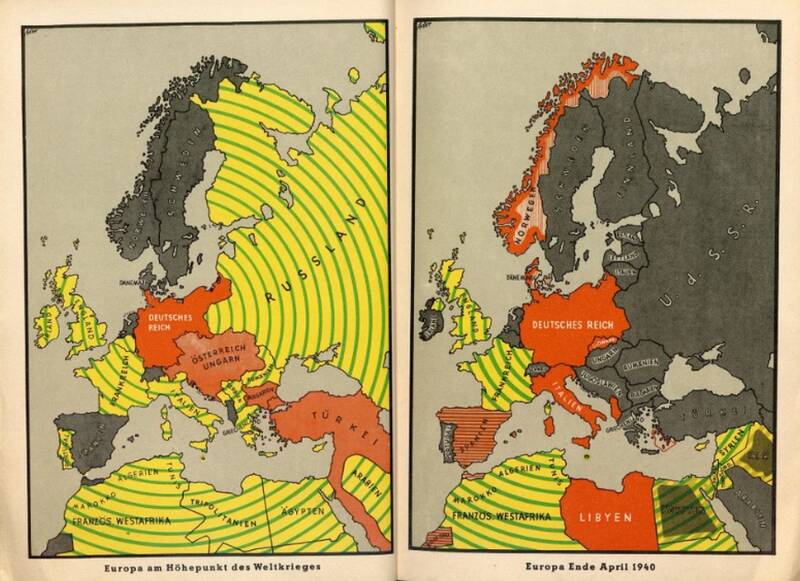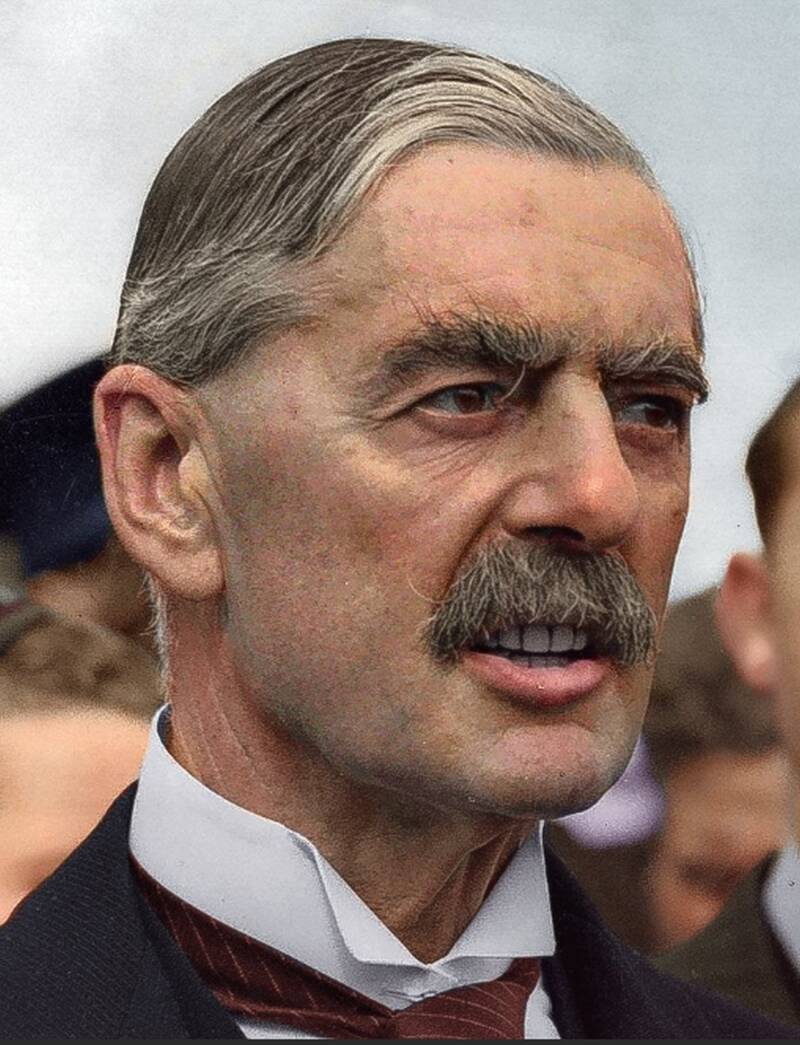Sitzkrieg
The Phoney War began at the outbreak of the Second World War with Hitlers Invasion of Poland, and lasted for eight months, ending with the German Invasion of France and the Low Countries on 10 May 1940. It refers to the relative peace and quiet and general inaction on the Western Front during this period, compared to events occurring elsewhere – most notably Poland.
The Germans referred to it as Sitzkrieg and the French, Drôle de guerre. For this entire period, there was very limited military action undertaken by the Allies or the Axis on the Western Front.
However, instead during this period, economic warfare was undertaken, such as naval blockades, and attempts were made to restrict or halt the activities of the German surface raiders – such as the formidable Deutschland-class, pocket battleship Admiral Graf Spee.

British troops occupying their time during the Phoney War.
Wikipedia

There were a few significant military land actions during this period:
- The Saar Offensive: French troops briefly attack Germany, venturing a few miles across the border in support of Poland, before withdrawing back to their starting positions.
- The Winter War between Finland and the Soviet Union started, in which France and Britain considered launching an offensive to assist Finland, although ultimately these plans came to nothing when the war ended in March.
- The German Invasion of Denmark and Norway in April 1940, resulting in the Allied troops earmarked for Finland being instead sent to aid Norway. After weeks of heavy fighting, the Allies were forced to evacuate their forces, leaving Germany in control of Norway.
Four crew members of a French Char C2 super-heavy tank "Poitou" belonging to the 51st Battalion, de Chars de Combat, pose for a photograph during the Phoney War.
At sea, the Battle of the Atlantic was already underway, and several clashes occurred during this period:
- A passenger ship the SS Athenia is sunk by a German submarine on the first day of the war, killing 117 civilian passengers and crew
- The British carrier HMS Courageous also being sunk by the U-29, with the loss of 519 lives on 17 September 1939.
- The sinking of the the aging British battleship Royal Oak at Scapa Flow by the German U-47 on 14 October 1939.
- The scuttling of the Admiral Graf Spee in Montevideo, Uruguay on 17 December 1939, after being pursued and cornered there by a force of British cruisers.
- The dramatic events of the Altmark Incident on 16–17 February 1940, which resulted in the rescue of around 300 British prisoners-of-war.
A German A Heinkel He 111 which crashed near Whitby, Yorkshire, England on 3 February 1940.
In the air, both sides conducted small-scale bombing raids and reconnaissance flights.
- As early as the 4 September, the Royal Air Force attempted daylight bombing raids on German warships in Heligoland Bight but they proved to be ineffective and incurred a heavy toll on the attacking Blenheim and Wellington bombers, leading to the daylight operations being abandoned by the RAF heavy bombers.
- The German Luftwaffe began launching raids on Britain from 16th October 1939, attacking British warships at Rosyth on the Firth of Forth, Scotland, resulting in the loss of several aircraft without any tangible results to show for their efforts.
- The USA was neutral at this point, and President Roosevelt was concerned about casualties from bombing and proposed that no bombing raids be launched that might harm civilians. The British and French – keen to not push German into retaliation which may escalate matter further - henceforth restricted their aircraft to dropping leaflets and carrying out reconnaissance.
Example of a German leaflet dropped during the Phoney War.
Flight crew of a Armstrong Whitworth Whitley Mark V twin-engined, front line medium bomber of 102 Squadron, 4 Group Bomber Operations Royal Air Force prior to taking off on a leaflet-dropping sortie over Germany on 8 March 1940 from RAF Driffield, East Riding of Yorkshire, England. During the Phoney War, Allied forces conducted leaflet raids over Germany instead of bombing. Aircraft dropped millions of pamphlets urging German citizens to resist Nazi propaganda and consider peace. These "messages from the air" aimed to undermine morale and promote anti-war sentiment. Though largely ineffective, the raids reflected Allied hopes to avoid full-scale conflict. Critics mocked them as weak, dubbing the period the “Sitzkrieg” for its inaction compared to the expected warfare.
Photo: © Davis/Topical Press Agency/Getty Images Colourised by Nick Beech
A peaceful co-existence
But what was life actually like for those on the front line in during the Phoney War? Many French troops found themselves manning the imposing Maginot Line defences while opposite them, their German counterparts sat behind the West Wall defences. However, by all accounts, there was often little tension or hostility between troops on either side, instead an attitude of trying to coexist peacefully and not do anything that might heighten tensions or escalate matters further.
British soldiers playing football (soccer) in Le Mans, France during the Phoney War. Note the gun mounted on a tripod in case the Germans attacked from the air.
Public Domain
British soldiers enjoy an impromptu show during the Phoney War.
It certainly made sense that the troops here – having been likely brought up with relatives who may have experiences the horrors of the First World War – might well have absorbed the fears of such a massive, destructive conflict ever happening again. So, when they then found themselves facing the sons and grandsons of their nation’s old adversary, situated only a few hundred yards away, across barbed wire and fortifications, it is little wonder that an attitude of ‘live and let live’ appears to have been adopted.
British soldiers in France during the "Phoney War" April 1940.
So, with no actual fighting taking place, the soldiers themselves soon found other ways to occupy themselves and stave off the boredom. Consuming alcohol was of course a popular past time (particularly wine tasting) as was various forms of gambling. For others, the simply act of relaxing in the sunshine, reading newspapers or books, proved a pleasant diversion. Others kept themselves fit exercising or kicking a football around with comrades. New hobbies were taken up and no doubt a few romances flourished with local girls as well.
A British 8-inch howitzer near the German border during the Phony War.

It wasn’t only the troops who wanted to avoid a war. Hitler had no wish to spark off a conflict in the west at this point as his forces were already committed to the Invasion of Poland – he had banned any crossing of the border. And the troops themselves hoped for a diplomatic solution which would avoid the need for actual fighting at all.
A contemporary cartoon reflecting the views held about the Phoney War.
Aside for some half-hearted reconnaissance missions, the peace and quiet continued to hold.
Two soldiers of the British Army peer out from the entrance to their dugout, named ’10 Downing Street’, made from old car doors and corrugated iron, in France, Nov. 28, 1939.
However, by the winter, Hitler’s invasion of Poland was now complete and the weather started to turn, the freezing conditions appropriately mirroring the increasingly cold attitudes of the French troops who were beginning to suspect the war was coming to them yet could do nothing about it.
They found themselves stuck in their positions while their officers continued to live a life of comfort and luxury behind the lines. Discipline and morale began to slip.

Dutch soldiers guard the border with Germany shortly after mobilization, 1939.
A British Mk. VIB light tank crew exchanges greetings with a French peasant during the “Phoney War” or “Sitzkrieg.” 1939.
u/mortemskz
Meanwhile, the Germans kept themselves busy, indulging in racing games and assisting the local population, in return for food and drink, drinking mulled wine in local inns, their morale lifted by their army’s victory in Poland.
With war increasingly likely, propaganda became the main weapon with both sides seeking to steadily chip away at the morale of the other.
Loudspeakers and posters nagged away at the opposition, the Germans trying to drive a wedge between the French and English, demanding that they consider whether it was worth dying for the Polish cause, and that the war itself was pointless.
Men of 'D' Company of the 2nd Battalion, Sherwood Foresters in a forward trench near Roches, 1 April 1940. Lance Corporal L. J. Harris has a shave while other men keep watch, one armed with a 2-inch mortar during the Phoney War.
Nazi propaganda map from the Phoney War. Translation (left) "Europe at the height of WWI", and (right) Europe at the end of April 1940". It's supposed to show that the Allied tactic of encircling Germany had been broken. Note that it has the USSR coloured as an ally to Germany.

Changes of government.
In the political area, changes were afoot though. Neville Chamberlin found his position untenable after receiving strong criticism for the failure of the British campaign in Norway. This coupled with the failure of his appeasement of Hitler, led to him ultimately resigning as Prime Minister when Germany launched their invasion of France and the Low Countries and – despite a strong case for Lord Halifax becoming Prime Minister – this led to Winston Churchill being asked to form a government.
French Prime Minister Édouard Daladier
British Prime minister, Neville Chamberlin.
https://www.reddit.com/r/HistoryPorn / Colorized by me
In France, Prime Minister Édouard Daladier fared little better. By March 1940, it was clear the France was in no position to support Poland, despite promising it would and with the failure to support Finland against the Soviets, it became increasingly likely that France would get again, find itself embroiled in a large-scale conflict on its own soil.
For a country that had suffered so much during the First World War, this was unacceptable, and Daladier resigned, to be replaced by Paul Renaud.
Paul Renaud, Daladier's replacement as Prime Minister.
Winston Churchill. Chamberlin's replacement as Prime Minister.
Evacuations
With the outbreak of war and the fear of mass bombings causing enormous civilian casualties, the large-scale evacuation of children and vulnerable people occurred from densely populated areas – likely target of bombers – to quieter, more sparsely populated rural areas, often outside the range of enemy bombers.
Codenamed Operation Pied Piper, the British government facilitated the evacuation of 1.5 million people – sometimes transporting them abroad to other parts of the British Empire. (Later evacuations were to occur after the Fall of France and the threat of the United Kingdom being invaded - via Hitler’s planned Operation Sealion - became a distinct possibility.)
Additionally, the United Kingdom received Channel Islanders and other displaced people from Continental Europe during this period, many pre-empting the inevitable Nazi invasion of their country and escaping to the United Kingdom, it’s relative geographic isolation from the rest of the continent - due to the English Channel - being seen as a natural barrier to Nazi expansion.
This poster was used to encourage mother’s to keep their children out of London, as Hitler appears as a ghostly figure trying to get her to take her children back home.
Child evacuees from Bristol arriving at Brent in Devon in 1940
Further reading
Sources
Wikipedia
https://frontlinetofrontpage.com/tag/winter-war/
J.L. Granatstein
https://legionmagazine.com/en/2020/02/the-phoney-war/
https://www.instagram.com/the_ww2_memoirs/
https://www.dhm.de/lemo/kapitel/der-zweite-weltkrieg/kriegsverlauf/sitzkrieg-193940.html
Arnulf Scriba, German Historical Museum, Berlin
https://www.spiegel.de/geschichte/2-weltkrieg-sitzkrieg-an-der-westfront-1939-1940-a-988304.html
Stefanie Maeck
https://www.warhistoryonline.com/instant-articles/the-phony-war.html?edg-c=1
https://www.reddit.com/r/HistoryPorn/comments/44rbzb/colorized_by_me_british_premier_sir_neville/
https://www.reddit.com/r/MapPorn/comments/3ejz0u/funky_nazi_propaganda_map_from_the_phoney_war/
http://www.webnewsys.com/2018/08/how-phoney-war-early-on-in-wwii-gave.html
https://www.iwm.org.uk/collections/item/object/205227840
https://i.imgur.com/fpiIa93.jpg
https://www.virtualmirage.org/keeping-it-real-3/
u/mortemskz
https://alexlimcolorization.blogspot.com/2017/11/winston-churchill-1941-colorized.html
https://i0.wp.com/neverwasmag.com/wp-content/uploads/2019/10/Paul-Reynaud.jpg?ssl=1
Peter Hitchens, "The Phoney Victory: The World War II Illusion" (2019).
Julian Jackson, "France: The Dark Years, 1940-1944" (2001).
